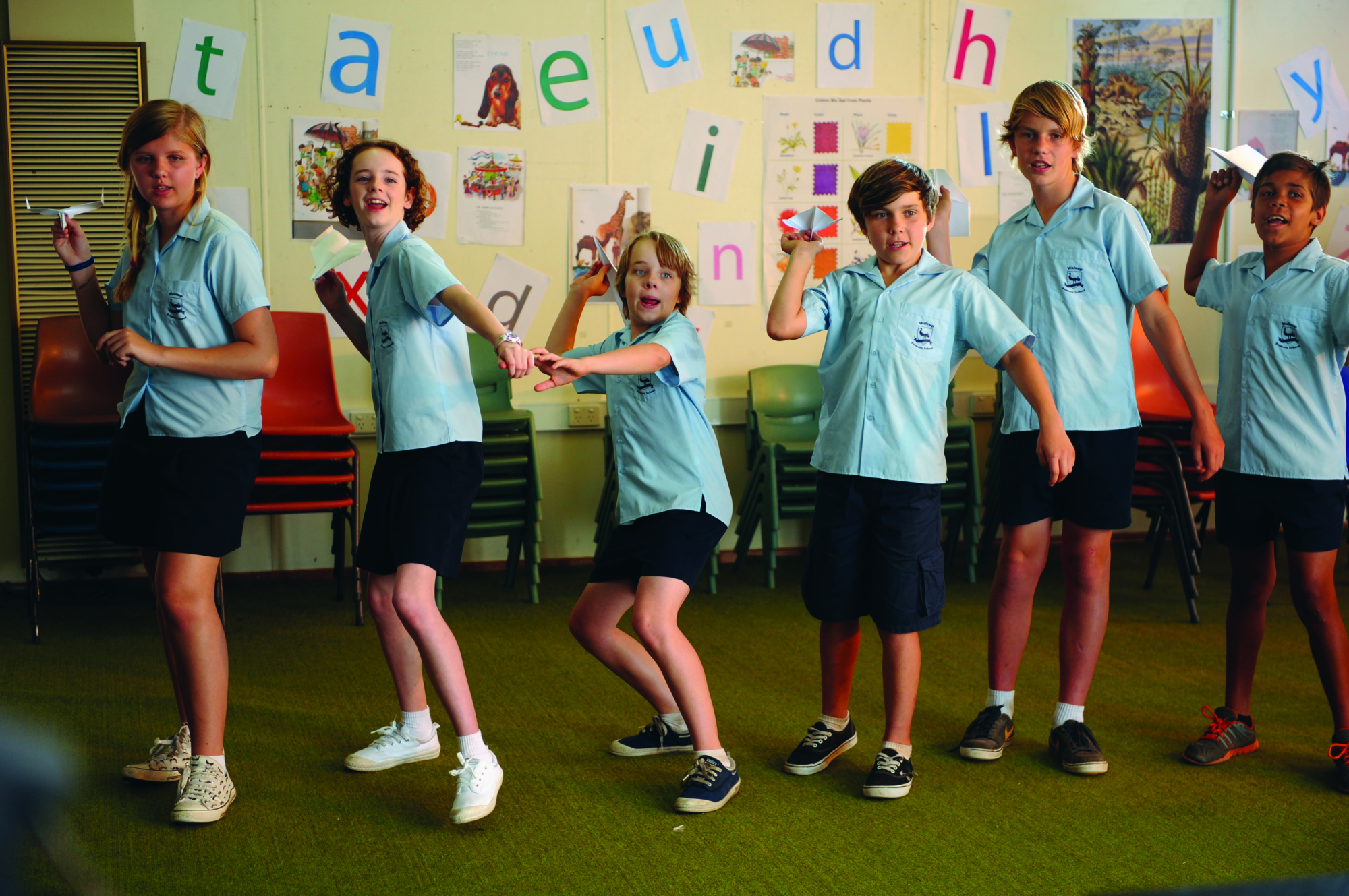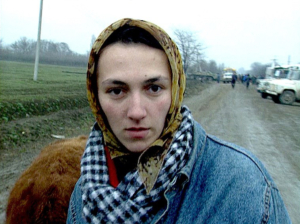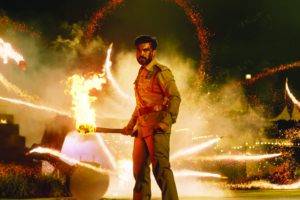Remember Paper Planes (Robert Connolly, 2014)? Probably not, I suspect; the film is the kind of crowd-pleasing pablum made to be forgotten. An archetypal underdog sports film – where the ‘sport’ in question is the construction of paper planes – it leans heavily on clichés and the charm of its young star, Ed Oxenbould, to carry its paper-thin narrative.
But while I can’t really recommend Paper Planes as a film critic, as a Maths/Science teacher I’m somewhat more enthusiastic! Connolly’s film is unabashedly targeted towards younger viewers, and in a primary or junior secondary context, that target audience can use the text as a springboard to explore aerodynamics, design and the intricacies of the scientific process.
Whereas most preceding editions of Cinema Science have centred on science at the secondary end of the spectrum, Paper Planes is very much suited for a younger audience. As such, the suggestions that follow are predominantly intended for primary teachers, but many aspects could be adapted for junior secondary … or even senior Physics, if you’re feeling especially ambitious.
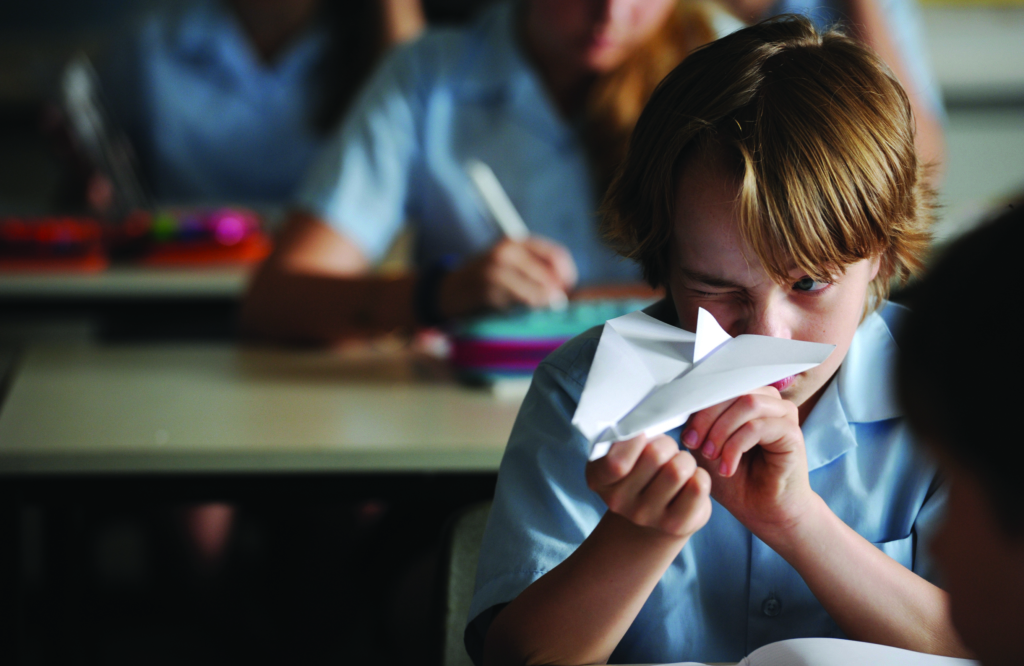
I believe I can fly
Paper Planes’ story begins with a familiar sight – an overly enthusiastic student teacher. Handed the reins of protagonist Dylan’s (Oxenbould) classroom by Mr Hickenlooper (Peter Rowsthorn), Jethro (Alex Williams) introduces a paper plane–making competition with all the excitement and nervousness befitting a pre-service teacher.
‘Today I am going to teach you how to make the perfect paper plane,’ he announces to the students. The groan that greets this revelation is precisely the reason why Paper Planes is a handy tool for teachers. Perhaps you might have fond memories of making and throwing paper planes – maybe under the cloak of subterfuge during your least favourite class? – but with the wealth of entertainment options available to kids nowadays, the prospect of throwing a crudely cobbled-together sheet of paper doesn’t compare favourably to Fortnite or Minecraft.
Thus, the spark of competition is required! Jethro gets it, sort of; he’s able to get the class engaged by simply asking: ‘So, who’s going to make the best paper plane?’ Competition creates interest and – potentially – innovation, and Paper Planes proffers the prospect of glory (and international travel) for the student who really knows their way around a piece of A4.
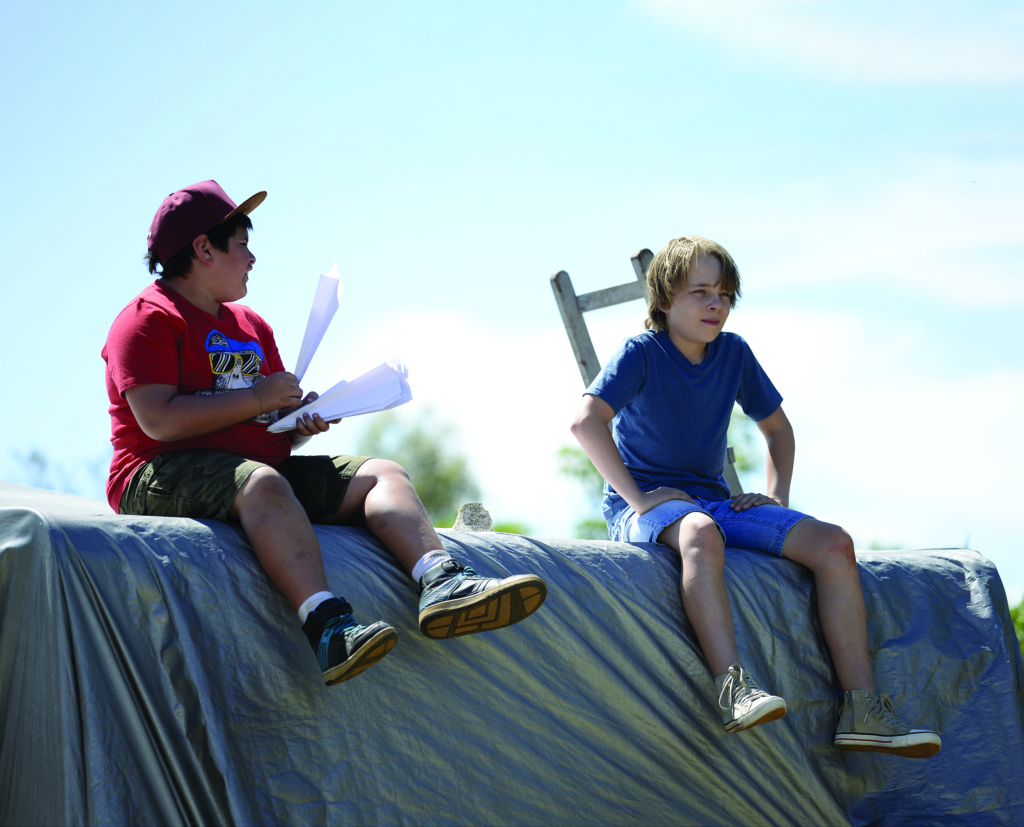
Though I wouldn’t treat Paper Planes’ vision of competitive paper-plane construction as entirely factual, the concept hasn’t been made out of whole cloth. The Red Bull Paper Wings competition sees competitors come from around the world to try to make (and throw!) the best paper plane – though it’s not restricted to school-age entrants. In 2019,[1]At the time of writing, these are the most recent finals of the competition; I’m unsure whether the contest has been discontinued or is merely on hiatus due to the challenges of COVID-19. Jake Hardy from the USA made the furthest distance of 56.61 metres, while a nineteen-year-old Australian named Cameron Clark had the longest airtime of 13.33 seconds.[2]See Benjamin Saldias, ‘Australian Wins the Red Bull Paper Wings World Final for Longest Airtime’, Red Bull website, 20 May 2019, <https://www.redbull.com/au-en/red-bull-paper-wings-world-finals-report-2019-15-05>; and ‘Aussie Man Wins Red Bull Paper Plane World Championship’, Man of Many, 8 July 2019, <https://manofmany.com/entertainment/aussie-man-wins-red-bull-paper-plane-world-championship>, both accessed 23 February 2021. A Scholastic school resource presents similar criteria, suggesting that students be rewarded for making planes that either travel the furthest or stay in the air the longest.[3]‘Paper Airplane Contest: Building and Scoring Instructions’, Scholastic website, <https://www.scholastic.com/teachers/articles/17-18/paper-airplane-contest-building-scoring-instructions/>, accessed 23 February 2021.
In order to design something that moves effectively through the air – whether it’s a paper plane, an actual plane or even a car – scientists must consider the three principles of aerodynamics: drag, thrust and lift.
The likes of Paper Planes and Paper Wings are only one half of the equation, though. Getting your class interested in making paper planes is one thing, but what’s the pay-off?
There are two major learning outcomes to come from building paper planes: an understanding of aerodynamics, and an understanding of the scientific method. Each requires setting aside a solid amount of time – though I’ve never personally spent classroom time on paper plane construction, I have run similar activities around parachutes and crumple zones, and each required at least a solid school day to bear fruit.
Let’s start with aerodynamics. In order to design something that moves effectively through the air – whether it’s a paper plane, an actual plane or even a car – scientists must consider the three principles of aerodynamics: drag, thrust and lift. Students can mitigate drag by considering the weight of the plane – for example, providing adhesives like glue and staples might make the plane more stable, but is the extra heft going to cause issues? – or, critically, the shape of the plane. Investigating which planes will flow through the air smoothly, and thus limit drag, is going to be a big focus of the day.
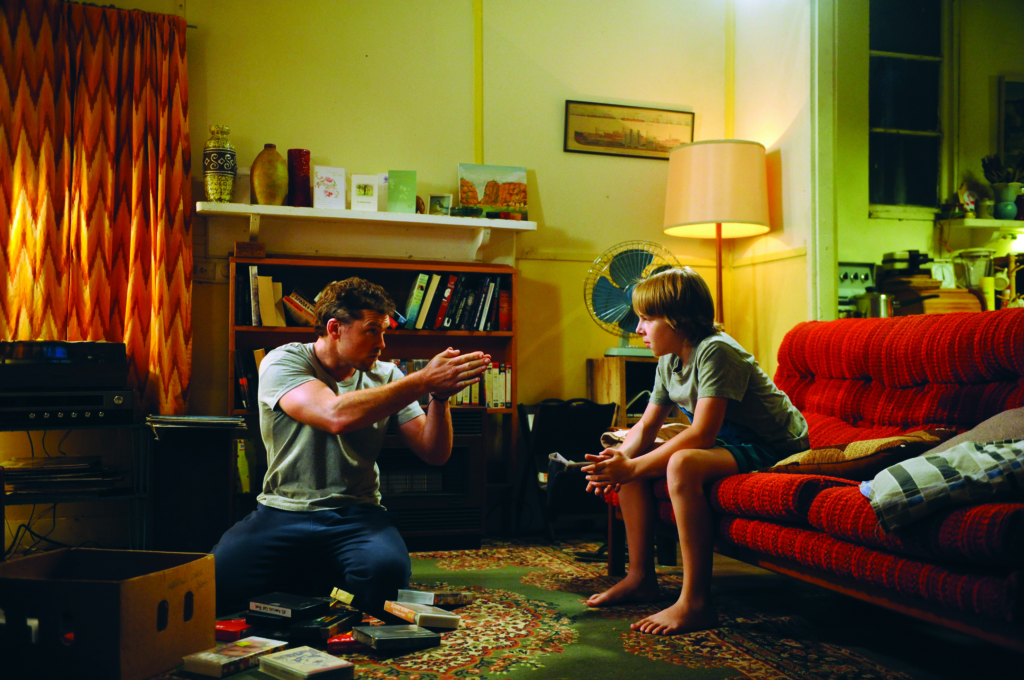
Lift and thrust can’t be neglected here either. Students will need to consider the impacts of their design choices; for example, bending up the corners of the plane’s ‘wings’ (a common trick) might improve the plane’s lift by allowing it to collect moving air underneath itself … but how does that in turn affect its thrust – how fast you can throw it, essentially – or its drag? These questions don’t have easy answers, which is what makes spending a day chucking paper planes worthwhile.
The great thing about an activity like this is that the difficulty can be adapted to suit the abilities of the students involved. You could simplify matters by providing templates to follow and test (plenty of online resources have step-by-step guides on constructing different planes[4]See, for instance, Jeremy Anderberg, ‘How to Make the World’s Best Paper Airplanes’, The Art of Manliness, updated 8 October 2020, <https://www.artofmanliness.com/articles/how-to-make-the-worlds-best-paper-airplanes/>, accessed 23 February 2021. or give students no scaffolding whatsoever. Students could just discuss the essential ideas of aerodynamics and how they might be balanced, depending on whether you were looking for a paper plane to travel a long way or for a long time. If you like, you could start getting mathematical: for example, ask students to measure the time a plane spends in the air or how far it travels, considering errors, or even work formulas in at the secondary level.
However you structure the activity, students should leave with a more robust understanding of aerodynamics. And you could leave it there – though, personally, I would be inclined to take some time for students to reflect on the learnings of the day and consider how they might affect the design of cars, boats, planes and the like. Alternatively, you could take a leaf from Dylan’s book and explore how natural examples of flight have influenced contemporary design – what can an eagle tell us about a sports car, for instance?
Paper Planes, perhaps surprisingly, presents an excellent opportunity to have a discussion about learning and self-improvement that is accessible for younger students.
Trial and error
One of the aspects of Paper Planes that frustrated me – as an avid game player – was the arbitrary nature of the competition itself. Take the stage that qualifies the competitors for the Tokyo finals: competitors must throw their planes over a 50 metre swimming pool, with only the planes that reach the end of the pool or beyond qualifying.
I have absolutely no doubt that I’m overthinking a children’s film here, but given that these kids have already qualified through an earlier minimum-distance competition, why not just have the top three or five (or however many) qualify? Why 50 metres, when at the aforementioned 2019 Paper Wings competition, only two paper planes even travelled that distance? Most egregiously, why is Dylan able to qualify by looping his plane above a support beam in the ceiling, while a fellow competitor is eliminated after hitting it? There’s no suggestion that part of Dylan’s design was intended to complete this task, so the results feel arbitrary.
This nitpicking has a purpose. While you might structure a school paper-plane contest around a competition, what you’re modelling is the scientific method. Through trial and error, observations and hypotheses, students are refining their paper planes in an iterative process that will ultimately produce a superior product. Sure, you’re likely eliding the intricacies of the underlying science, but the basic process here – test, observe, refine – is fundamental to how science effectively solves problems and answers questions.
These problems, however, require clear parameters. The design of a paper plane will differ depending on whether it’s intended to be thrown outdoors – where wind is a significant factor – or in an enclosed space. Is distance measured in a straight line from where it’s thrown, or is it only measured perpendicular to a set starting line? These aren’t arbitrary questions, but assumptions that will determine the processes applied and decisions made.
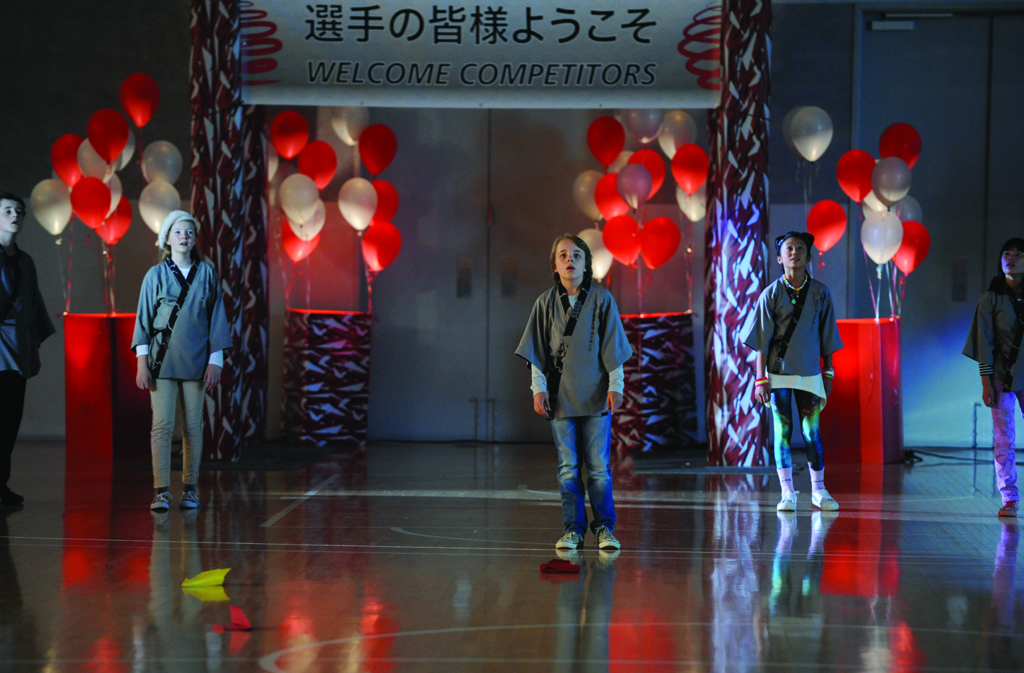
That’s significant if you’re the teacher designing the activity, but it’s also a conversation you can bring the students into. Rather than setting the stakes of the competition, work with your students to collaboratively establish the rules. Who measures the time of the plane in the air, and how can you ensure this is accurate? Are we measuring distance travelled, or displacement from a point? How many times can you throw your plane, and does it need to be the same model each time? While the answers here don’t necessarily matter, the conversation around them will help students to understand why science requires a clear method, objective and hypothesis in the first place.
Similarly, to ensure that the paper-plane competition has more than a sprinkle of science in it, give the students reflection questions throughout to focus their conversation. Depending on the year level, these can be as straightforward as asking students to identify what worked and what didn’t; but at upper primary, I’d encourage students to systematically take note of each modification they make and the effect it has on the end result (time or distance). You can also let students decide how many trials they run with each change, and consider the effects – multiple trials might reduce error but also limit the opportunity for experimentation due to time constraints.
Growth mindset
If you’ve been following educational research over the past few years, you’d have at least a passing familiarity with the concept of ‘growth mindset’ that has been championed by psychologist Carol Dweck.[5]See Carol S Dweck, Mindset: The New Psychology of Success, Ballantine Books, New York, 2007. The gist is that successful learning often coincides with an attitude in which success is attributed to effort and failures are seen as opportunities – as opposed to a ‘fixed’ mindset, wherein successes are attributed to talent and failures are often seen as impassable obstacles.
Though this can be oversimplified, the takeaway for teachers is clear: students should be encouraged to develop a growth mindset – often associated with the concept of ‘grit’, or the ability to push through tough situations – where possible. That ‘where possible’ is the crux, of course; though you can try to model growth mindsets and try to mitigate students’ negative self-talk, it’s not an easy task to reframe their entire mindset, particularly when the concepts might be outside their proximal zone of development.
Paper Planes, perhaps surprisingly, presents an excellent opportunity to have a discussion about learning and self-improvement that is accessible for younger students. The film itself doesn’t seem to have a clear conception of why its hero succeeds; Dylan shows obvious talent for making paper planes, with his first attempt soaring across his school’s oval to the amazement of his teachers and peers. But – as any good underdog story would necessitate – he subsequently struggles to replicate that first attempt, and, through grit and determination (and, let’s be honest, a hefty dose of good luck and convenient plot machinations), is able to ultimately succeed. Intentionally or otherwise, much of Dylan’s storyline aligns with the importance of a growth mindset.
A mediated class conversation around Dylan’s path to victory should allow your students to reflect on what his path to success looks like, and what lessons they can take away from it. Dylan regularly seeks assistance from those around him; when initial entreaties to his father (Sam Worthington) prove fruitless, he gets his teacher to help with practising different plane designs, and takes advice from his friends Kevin (Julian Dennison) and Kimi (Ena Imai). He learns from his successes and failures alike, but is still able to win thanks to his own unique creativity: his final, triumphant plane is modelled on birds in nature. Dylan is talented, yes, but his success is based on more than natural ability – a lesson that’s far more crucial than how to make the best paper plane.
Endnotes
| 1 | At the time of writing, these are the most recent finals of the competition; I’m unsure whether the contest has been discontinued or is merely on hiatus due to the challenges of COVID-19. |
|---|---|
| 2 | See Benjamin Saldias, ‘Australian Wins the Red Bull Paper Wings World Final for Longest Airtime’, Red Bull website, 20 May 2019, <https://www.redbull.com/au-en/red-bull-paper-wings-world-finals-report-2019-15-05>; and ‘Aussie Man Wins Red Bull Paper Plane World Championship’, Man of Many, 8 July 2019, <https://manofmany.com/entertainment/aussie-man-wins-red-bull-paper-plane-world-championship>, both accessed 23 February 2021. |
| 3 | ‘Paper Airplane Contest: Building and Scoring Instructions’, Scholastic website, <https://www.scholastic.com/teachers/articles/17-18/paper-airplane-contest-building-scoring-instructions/>, accessed 23 February 2021. |
| 4 | See, for instance, Jeremy Anderberg, ‘How to Make the World’s Best Paper Airplanes’, The Art of Manliness, updated 8 October 2020, <https://www.artofmanliness.com/articles/how-to-make-the-worlds-best-paper-airplanes/>, accessed 23 February 2021. |
| 5 | See Carol S Dweck, Mindset: The New Psychology of Success, Ballantine Books, New York, 2007. |
